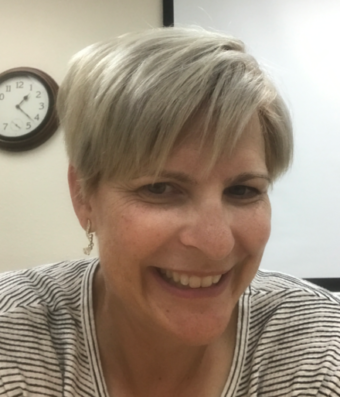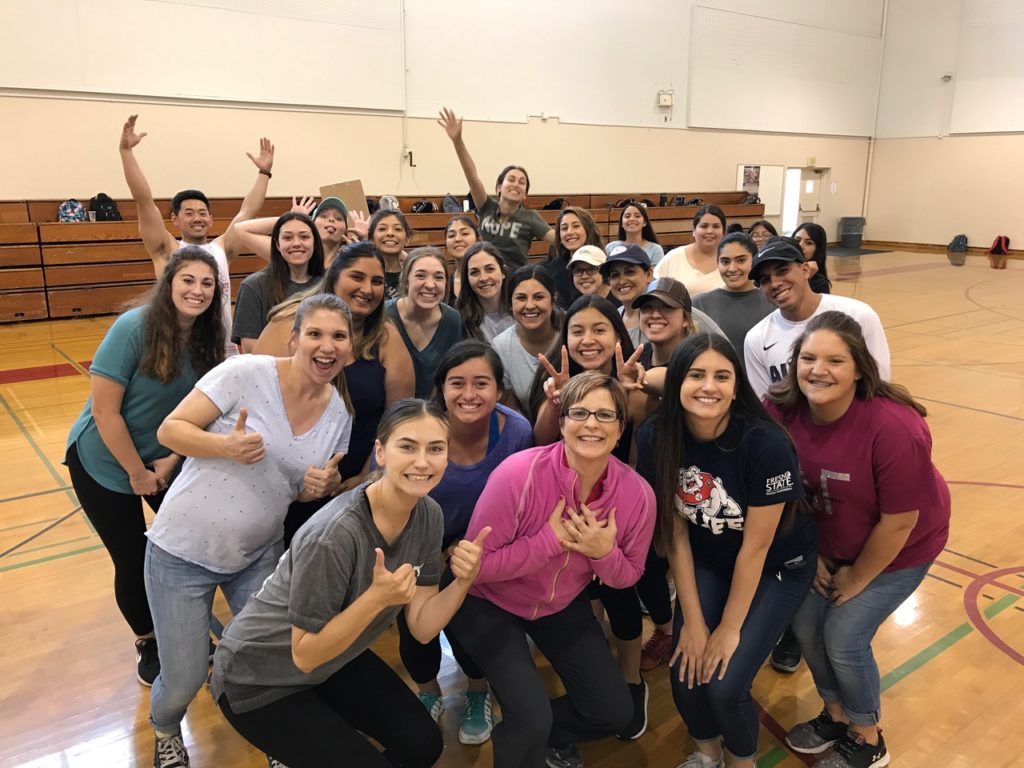Star high school basketball player, Nicole Smith, differs in many ways. For example, she doesn’t have a storied history. Her rise up through the ranks in Physical Education is a positive example to others. In 1987, she played on the undefeated Tucson, Arizona high school basketball team winning every game including the state championship. Earning a full ride athletic scholarship to the University of Nevada-Reno, the authentic and funny Nicole Smith recalls, “My best achievements included being named the Gatorade State Player of the Year for Girls Basketball in Arizona 1987.”
Graduating with a degree in Physical Education, she jumped into a career as a Nevada middle and high school PE teacher (1993-2003), a coach, and a Division 1 basketball official, but she yearned for even more. Using her many social and emotional and physical skills, the young Smith credits many who mentored her, such as Tracy Wolf. “Probably the most important thing I learned from Tracy was that effective teaching is the end result of vision and hard work. I also learned that teaching was fun and allowed me to continue to lead a healthy lifestyle. I enjoyed being a role model for my students,” acknowledges the then young Nicole Smith.
That yearning led down the path of Nicole spending the six years earning a Masters then a doctorate in Physical Education at the University of Nevada-Reno. The high-energy and humble Nicole credits her mentors for her success, “I earned my master’s and doctoral degrees under the tutelage of Dr. Monica Lounsbery and I had the opportunity to study with Dr. Thomas L. McKenzie.”
Now at her third university specializing in PETE (Physical Education Teacher Education) Nicole was hired at California State University-Fresno in 2016. Today, she is a researcher, teacher, and sought after mentor to young professionals who want to develop a career much like the one she has found in higher education. As she explains, “CSU-Fresno academic opportunity allows me to develop new skills, but also affirms my desire to stay in higher education.”
Many of the students she works with have nothing but praise to give when it comes to Nicole. One graduate student, Calixte Aholu, who worked closely with Nicole for her dissertation commented that she is grateful to have met someone who is “nothing but committed to student success.” Calixte now follows Nicole’s motto of “KIS” (Keep it Simple) which guides her journey as an instructor today.
When it comes to keeping it simple, Nicole would agree that incorporating Heart Zones into your PE program is the way to go. When asked “why” she chose to use Heart Zones edtech (education technology) the caring Nicole quickly explains with enthusiasm how she applies Heart Zones in higher education, “I think we have the most fun when we use heart rate to inform how an activity is designed. For example, we previously compared heart rate outcomes in three different relay activities. We modified each relay by changing group size and changing the nature of the task.
In one relay, students were in groups of five. Four students stood on the end line while one student traveled down and back. In a second relay, we put students in relay teams of three. Two students stood on the end line while one student traveled down and back. In a third relay all students were engaged in the relay at the same time by moving from point A to point B to point C to point D to point E. Students were immediately able to see how changing group size and also changing the nature of the task impacted lesson outcomes. It is a powerful way to help them understand why teachers matter! Most students immediately concluded that they should modify relays to ensure that wait time is minimal and time on task is maximized. The access to immediate visual reports were really powerful to this end.”
Heart Zones’ goal is for every single teacher-coach partner in our mission to get America fit doing so using edtech to raise the bar on meaningful Physical Education. “I purchased Heart Zones in 1996 thanks to Beth Kirkpatrick, the PE pioneer for data tracking and to support teaching and learning in my Physical Education Teacher Education methods courses. We like to use Heart Zones during lab activities as an individual assessment and also as a group assessment. Individuals can monitor and reflect on their individual engagement and heart rate outcomes. Activity leaders can evaluate their effectiveness by evaluating the group reports,” as the student-centered Nicole further clarifies the application of group personalized and individualized Heart Zones Move Solution.
The “why” question for Nicole’s contributions is a tribute to her kind nature as she says, ”I am concerned with the well-being of others and want to make a positive difference in the world with my work. I enjoy helping collegiate students develop skills, grow confidence, and navigate their career pathway.” And, she does a bang-up job in living the life of a Physical Education professional.
Do like Nicole Smith did back in 2016 – ask for an online demo and infuse your program with some of the most innovative and engaging edtech available to quality Physical Education teachers today. It’s affordable and easy to use with CARES Act grants available for the asking.
______________________________________________
Contact Nicole directly for more information or to ask her your questions:
Nicole J. Smith, Ph.D., Associate Professor, Department of Kinesiology, CSU, Fresno
5275 North Campus Drive, Mailstop SG-28 | Fresno, California 93740-8018
Email: njsmith@csufresno.edu | Office: +1 559-278-2069








